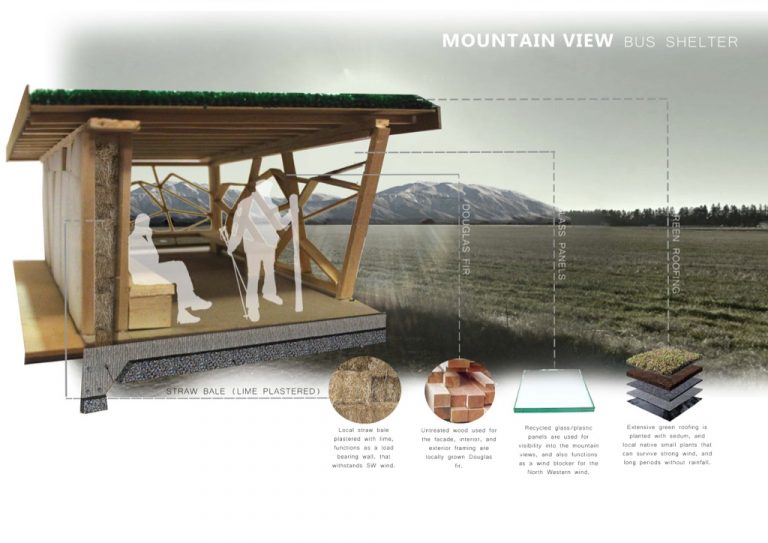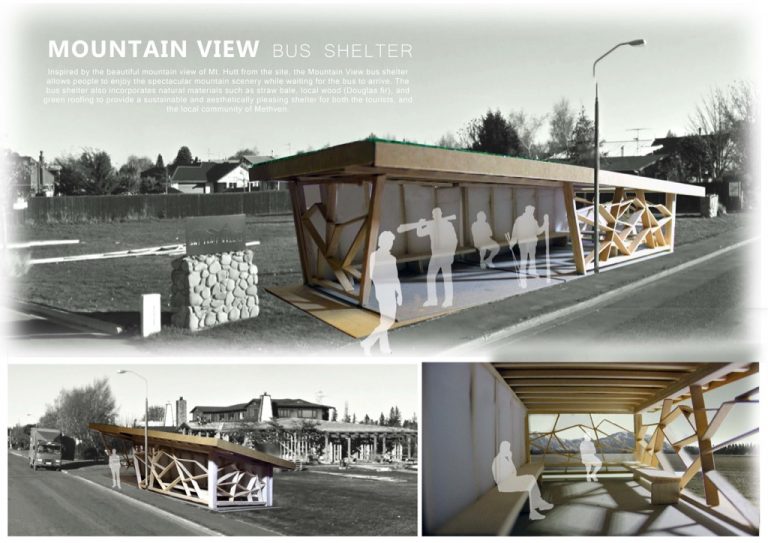This is our Entry – Whare Whenua
Whare Whenua is bus shelter created from natural materials. Rammed earth walls shelter the users from oncoming words and help support the angled steel roof that is inspired from the southern alps seen fro the site at 47 Racecourse Avenue. Untreated Timber louvres, which are used as an architectural element also helps with shelter from the winds and while showcasing the idea of a rising mountain. During winter seasons skiers and snowboarders can hang the gar on the wall and during the non winter periods the bus shelter can also be used an area to come and hang for the community.
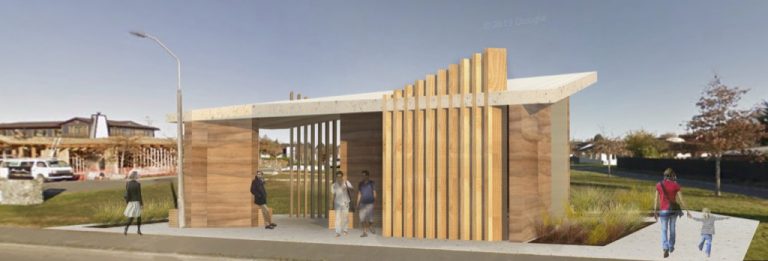
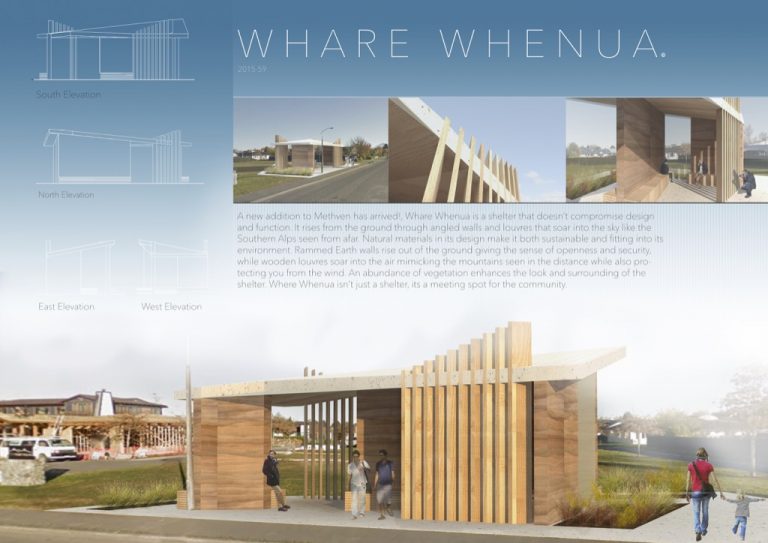
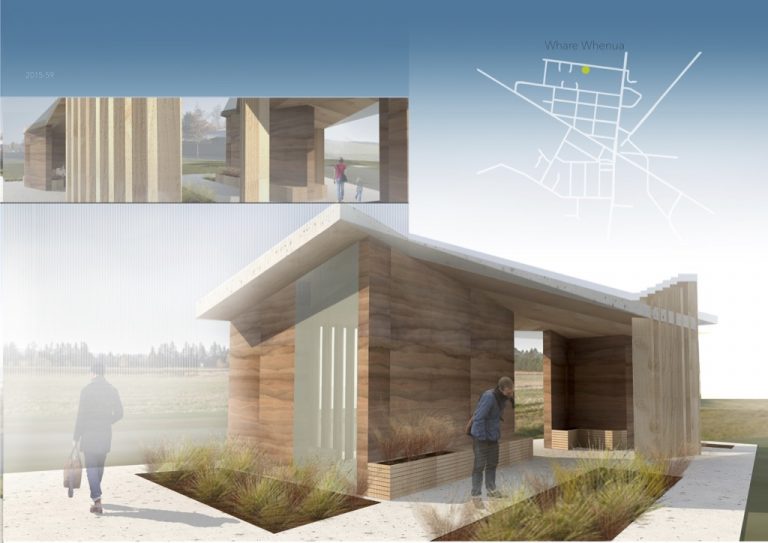
Category: 2015 Challenge Finalists
2015 Shortlist to the Sustainable Habitat Challenge
Click on the images to zoom.
A potential site for the bus stop is at the corner of Racecourse Rd and the Main Hwy 77 going North, in Methven, New Zealand: (Google Maps)
Seven Summits arises through the grounds of Methven to replicate the beautiful aesthetic of the mountain summits in the horizon. Not only a bus shelter, but Seven Summits provides a space for communities to gather with one another through an engaging environment. A community garden brings together people of multiples ages and interests, thus bonding the small town of Methven and creating a future of innovation and entrepreneurship. The main goal of Seven Summits was to create a space that would be able to interact with environment and also to link that connection with the people of Methven. Each peak tells a different story, therefore the heights were altered so that this could be signified. The stone walls represents structure and safety, helping block the cold winds of the south and furthermore the strong gusts of the north.
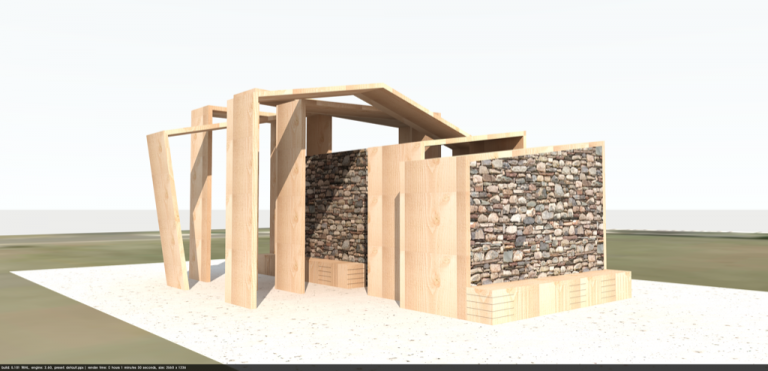


Our project consists of rammed earth walls, Douglas fir panelling and seating, a concrete floor, and steel roofing. There are two entrances, the main one opening onto the road, and a smaller secondary entrance at the rear of the shelter allowing access from the resort. The walls at the back overlap at the entrance to stop the cold southerly winds entering the shelter. There is vertical panelling on part of the front entrance to deflect the chilly North Westerly winds while allowing in the morning sun from the East. The main opening faces North allowing sun to stream in all day and views of Mt Hutt. The rammed earth walls combined with timber panels and seating give the shelter a warm and cosy feel. The roof drains to a single point at the rear, then trickles down a chain drain into a small wishing well. It seats approximately 16 people.
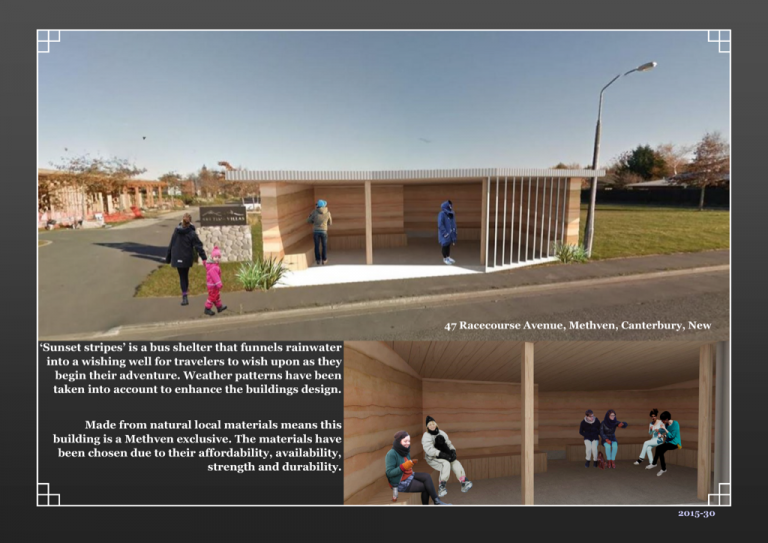
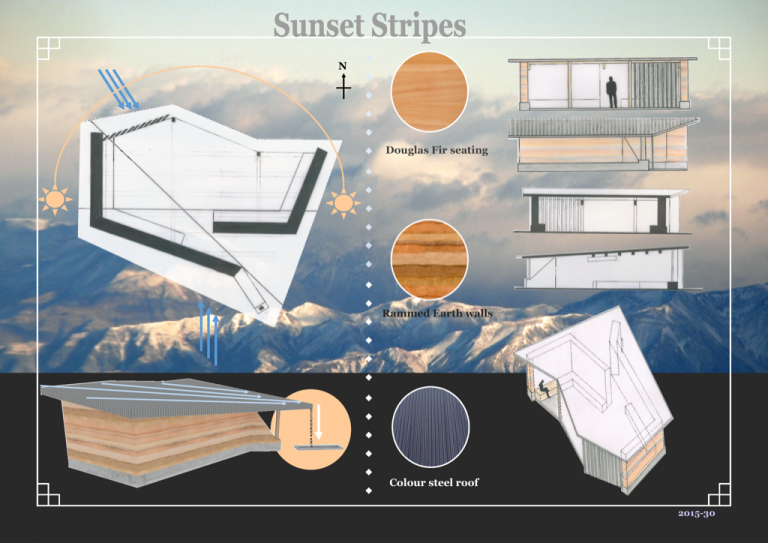
Rerehi Whakarutu
For our Shac bus shelter proposal we explored the concept and ideas behind curves that could be achieved using straight lines and arranging them using horizontal and vertical axis. We used this to replicate the rigorous mountain sides and combining this idea into our proposal. We wanted to achieve a shape that not only looked interesting but contrasted from the landscape that it was surrounded in. We included this idea in the roof construction of the project. The materials were sourced locally and provided a low and effective solution and helped reduce the overall carbon footprint of the bus shelter. With a combination of wooden shingles and a timber frame construction the bus shelter was primarily focused on natural materials and its conventions. We wanted to move away form the traditional bus stop design of a roof and walls to something that was unique in its own way.


“Off the Rails” relates to the historical context of Methven. Tapping into the lines of Methven being the terminus of a historical railway system of the late 1800’s. The frame is comprised of a skeleton of recycled railway sleepers supplied locally in the Canterbury region. The walls are made up of local, recycled pallets in filled with a layer of cob, for strength and shelter. by up-cycling these materials we are transforming what was previously the end of a journey into what now facilitates the beginning of one. These materials also provide an earth and farmyard aesthetic that ties into the Methven experience. Located on Racecourse Avenue near the Ski Time Methven hotel. The shelter caters comfortably for 20 people all year round and provides a suitable shelter for all weather conditions. With its move-able barn doors and variety of seating arrangements our bus shelter will make a trip to the local mountains a social and enjoyable experience for all.


PDF (7.6MB)
Inspired by the beautiful mountain view of Mt. Hutt from the site, the Mountain View bus shelter allows people to enjoy the spectacular mountain scenery while waiting for the bus to arrive. The bus shelter also incorporates natural materials such as straw bale, local wood (Douglas fir), and green roofing to provide a sustainable and aesthetically pleasing shelter for both the tourists, and the local community of Methven.
Materials used are the following:
Strawbale plastered with lime for the south part of the bus shelter that functions as a load bearing wall, which withstands southwesterly prevailing winds.
Also a great natural and sustainable material that provide insulation
Untreated local (Douglas fir) wood used for the overall framing of the shelter.
Recycled glass are used for the visibility of the mountains, which also functions as a wind blocker for the North West cold wind.
Extensive green roofing for the flat roof of the shelter, which uses local small plants that could survive strong winds.
